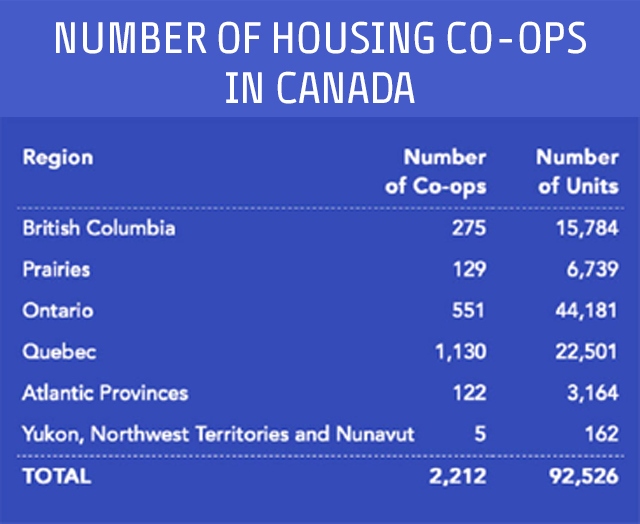THE VIENNA FIX
Co-ops: the obvious answer to our housing crisis that we just refuse to use

Members of the Old Grace Housing Co-op in Winnipeg
THE DRIVE TO OWN A HOUSE is killing us. It has turned every mortgage holder, of every city condo and every house in a suburb, into a property speculator. Each and every one looking to “make a killing” in a red hot housing market.
The idea that housing is a human right—something Justin Trudeau said it should be in 2017—is now a cruel joke.
Canadian “Jeopardy!” super-champ, 23-year-old Mattea Roach, had won US$460,184 as of this writing. She had said she was hoping to win enough to buy a house. She lives in Toronto.
Sky-high rents make keeping a roof over your head as precarious as swimming with sharks.
Thousands of homeless camp in our parks, summer and winter.
It doesn’t have to be this way—at least not to this extent. It isn’t in Vienna.
$400 a month in Vienna
The Viennese are not obsessed with the need to own a house. In fact, most don’t: 60 per cent of the residents of Vienna live in units either owned by the municipal government or in state-subsidized, non-profit co-operatives. A one-bedroom co-op apartment rents for around $400 in the city.
In Austria, 20 per cent of all housing and 40 per cent of multi-family housing is non-profit.
Support from all the political parties in the country ensures that the supply of high-quality co-operative housing keeps up with public demand.
Non-profit housing co-operatives are mixed-income, multi-unit projects that are jointly managed by residents.
In the 1970s, Canada invested heavily in co-operative housing, and some provinces also implemented their own programs. The federal government provided financial support in the form of government-backed mortgages and subsidies to low-income tenants.

Affordable in perpetuity
Members of housing co-ops qualify for either market units or subsidized units. Residents in market units pay the full rent, but the price is lower than what’s charged by private landlords, since no profit is extracted. Residents in subsidized units contribute a percentage of their income, which is topped up by a government subsidy.
Once the building’s mortgage is paid off, the fees charged to co-op residents are low because they only cover maintenance costs. The units remain affordable in perpetuity, and the cost of the government subsidy decreases over time.
Mixed income housing co-operatives were a key component of the redevelopment of the St. Lawrence neighbourhood in downtown Toronto, which is now considered one of the city’s most vibrant areas.
Seventy per cent of the first two phases were developed by non-profit housing organizations, and co-ops continue to anchor affordability in the downtown core.
Co-operatives are extremely cost-effective because they almost never default on their mortgages, which is why the federal government hopes to leverage $500 million to build 6,000 units, an investment of $83,000 per unit.
The ‘market’ can’t solve the problem
The supply of new housing in Toronto has increased at a faster rate than population growth. This tells us that increasing supply alone is not the answer. What is needed is affordable housing—the kind non-profit co-ops provide.
Foreign speculators are often blamed for our high cost of housing. But foreign investors, only make up 2.2 per cent of buyers in Ontario’s red-hot real estate market.
“The actual speculators are regular homeowners,” writes Margaret Kohn, a professor of political theory at the University of Toronto, in her article “Housing co-ops could solve Canada’s housing affordability crisis,” recently published in The Conversation.
Kohn concludes: “The goal of housing for all cannot be achieved through the market alone. Co-operative housing offers a viable solution that could substantially ease the housing affordability crisis.”
- 30 -













Add new comment